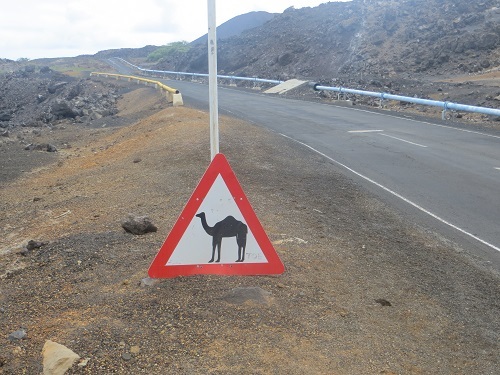In the beginning there was little but lowly endemic parsley ferns on the precipitous volcanic cones of Ascension Island, that burnt, parched rock lost in the vastness of the South Atlantic -- and what there was quickly succumbed to the sheep and goats introduced by Portuguese and Spanish sailors in the 16th century to restock their passing ships with food on the previously uninhabited island.
But in the 19th century some genius hit upon the idea of planting exotic vegetation around Ascension's 2,800-foot peak to attract clouds and the consequent rainfall on what is now called Green Mountain.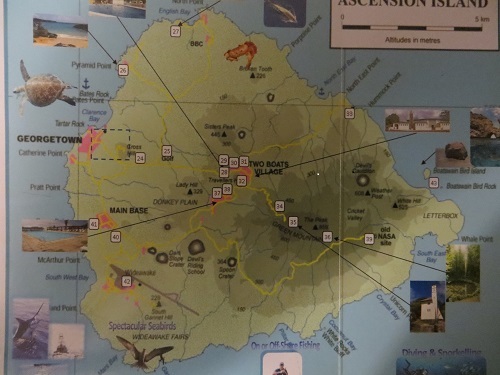
Ascension Island visitors' guide
That genius was Sir Joseph Dalton Hooker, one of the greatest British botanists of his day, friend of Charles Darwin and Director of London's Royal Botanical Gardens at Kew, who visited in 1843, and sent along a whole host of seeds. 
Green Mountain
It is arguable whether this large-scale artificial forest -- really a collection of steep woodlands with 40 kinds of trees, grasslands and groves of shrubs -- has actually increased rainfall or merely the collection of humidity and mist, but it must be one of those rare occasions, and these days even rarer, in which humankind seems actually to have improved on Nature.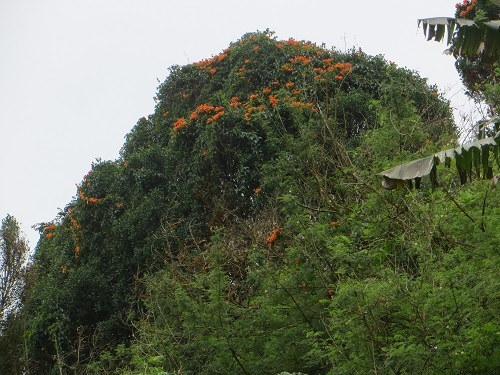
Flowers in the once lava desert
Today trees, banana bushes, guavas and other plants carpet the steep red and grey volcanic rocks in multiple hues of green dappled with orange, red, yellow and blue flowers. And that's just the flora. 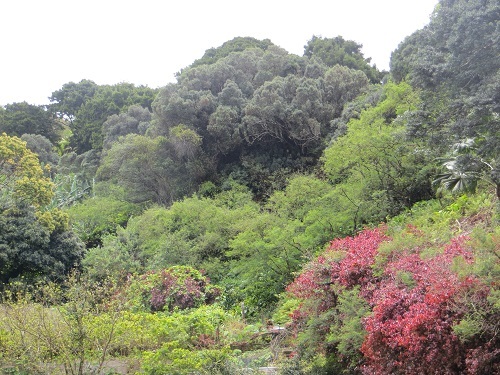
Flowery lushness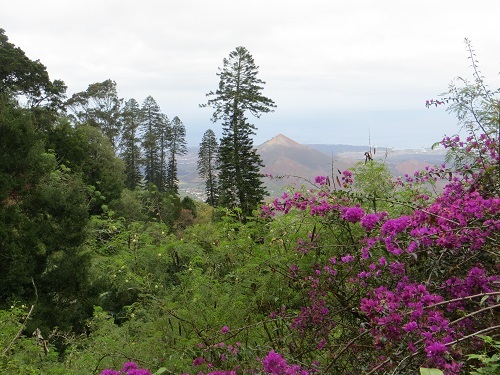
More flowery lushness
The native fauna consist of armies of giant land crabs garbed in bright yellow or deep purple, skittering and scampering over the trails. They scatter sideways through the undergrowth and disappear into their burrows if you approach too close, sometimes turning to face you in defensive mode, claws crooked in front of their faces, eyes on stalks fixing you, slanted mouths ajar.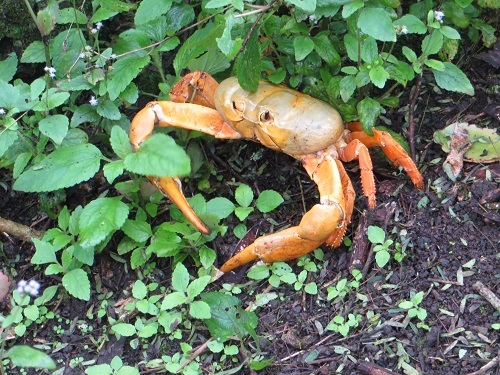
A yellow land crab
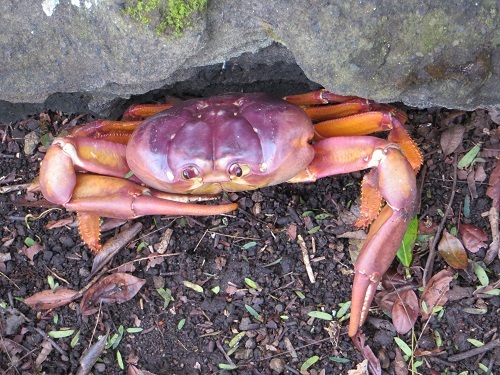
And his/her purple cousin
It is not known how these beautiful creatures, who cannot swim and are found only here and on three Brazilian islands further west, arrived on this speck some 900 miles from the nearest land mass in Africa, but it is believed that they have been here for much of the million years since the volcano first poked its head above the waves. They leave their lofty perches for sea level only to spawn by the shore.
At the top of Green Mountain are several buildings and other ruins, where homesteads were established in the 19th century. A network of magnificent trails start out from Garden Cottage, affording spectacular views over the lower cones, the coast and out to the vast blue yonder. 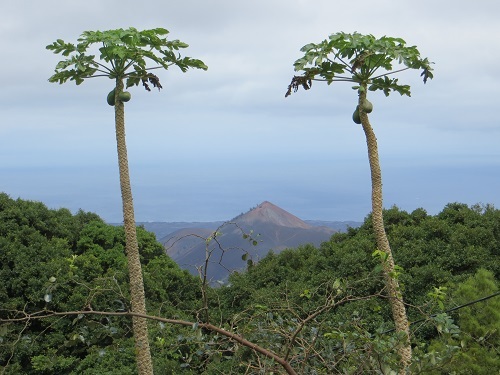
Spectacular views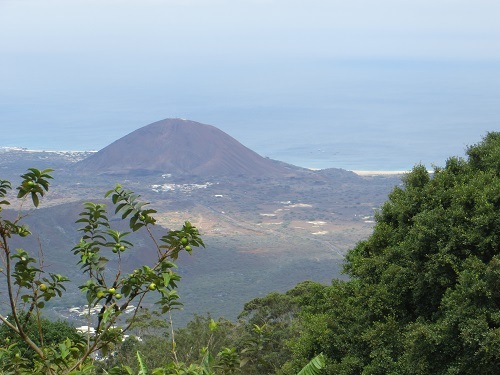
More spectacular views
A small group of us snakes out along Cronk's trail, sending hordes of crabs skittering about and almost skittering down the precipitous slopes ourselves as overnight rain has turned the mud and wet leaves into a skating rink. 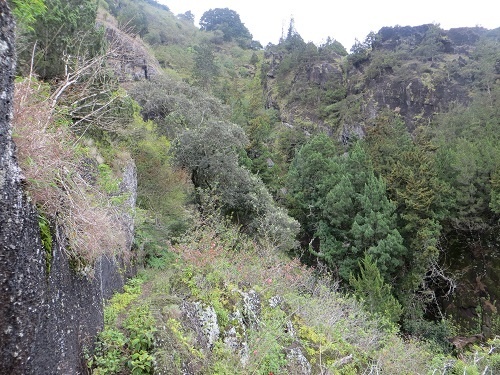
Along the trail
We scamper back along Rupert's trail, less slippery but nonetheless dangerous. Along the way at Black Rock a cross marks the spot where Royal Marine James Galloway plunged to his death in 1872. 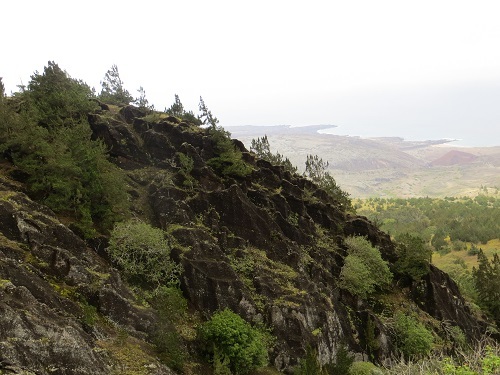
Near Galloway's plunge
As luck would have it, on this particular day a visitor from England has decided to molest the crabs, poking them with a stick to make them move, grabbing at them and holding them up as they crook their claws and dart black looks at him from their stalky eyes.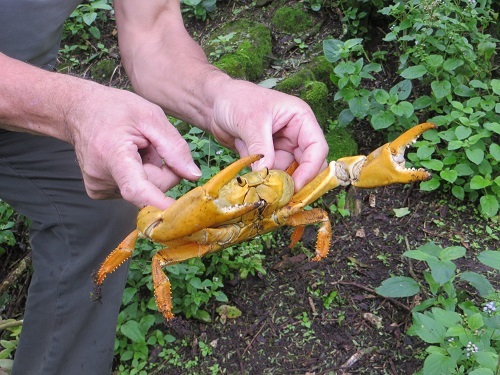
The crab molester strikes
He strikes again
Ascension's hikes are called 'letterbox' trails, because quaint old letterboxes have been placed at various vantage points where there's a book and pen for comments and a rubber stamp to imprint on your map or passport. We of course leave a smart-arse comment: saw no crabs but the camels were wonderful. It turns out to be semi-prophetic as a visit to English Bay will later show.
Back at Garden Cottage and behind the Red Lion - no, not a pub but a hostel built for Royal Marine farm workers in 1863 and still housing workers into the 1990s - several other trails radiate out around the summit. 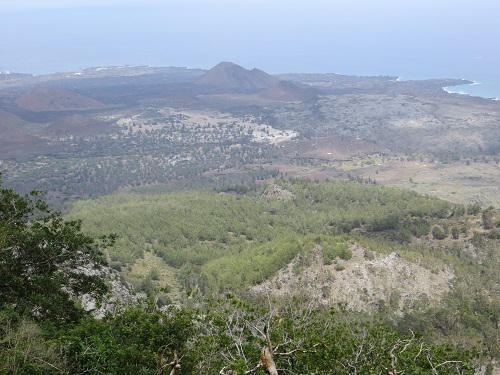
More views
There are magnificent views over precipitous Breakneck Valley, and an example of humankind's less aesthetically felicitous interventions with nature -- the bald concrete slabs of a water catchment system.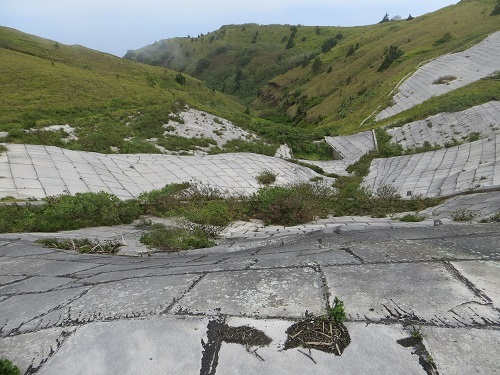
Water catchment at Breakneck Valley
Green Mountain is by no means the only splash of brilliant green on Ascension. Trees and flowers surround Two Boats, the island's other village. 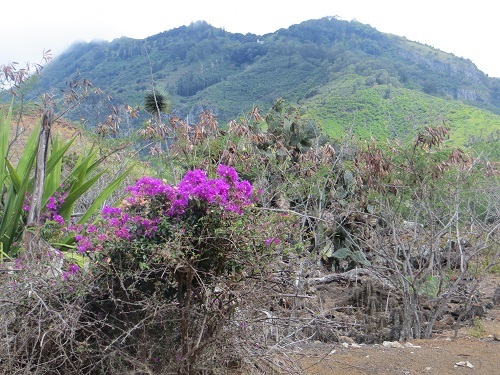
View from Two Boats
This inland hamlet earned its improbable name from the hulls of two boats that were stood on their ends in the 19th century to provide shelter for Royal Marines carrying water down from the mountain. Nearer the coast is One Boat -- a half boat hull on its head by the roadside containing assorted sports trophies won by the locals. 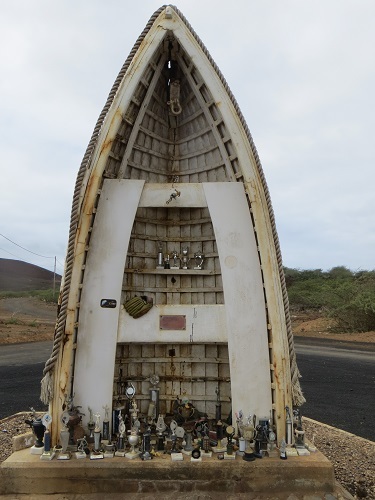
One Boat
Beneath Green Mountain and on towards the east coast, groves of sage green trees infuse an enchanted aura to the stark volcanic cones and lava fields. But once at North-East Point, barren black rocks rule supreme again as the azure South Atlantic sweeps in. Just to the south at Hummock Point (getting close to those camels) the European Space Agency mans a rocket tracking station. 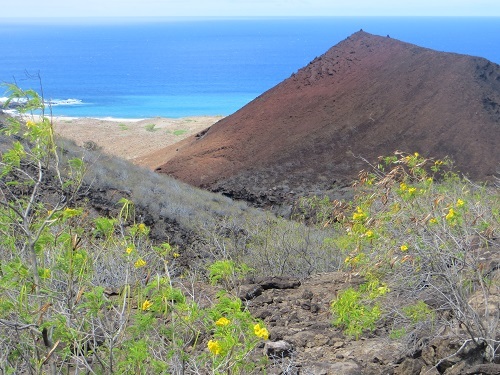
Sage green and yellow on the way to the east coast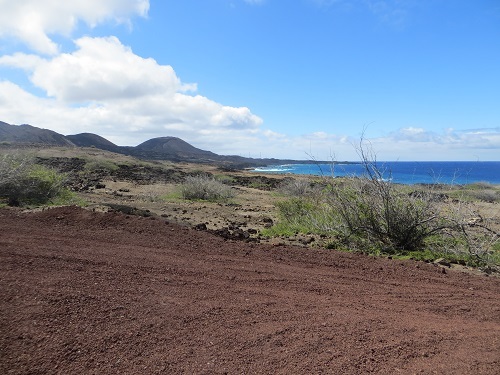
The east coast
European Space Agency tracking station
On the other side of the island, beyond Wideawake Airfield and the U.S base, is a different scene, a strange moonscape of lunar lava stacks on Shelley Beach, where hordes of sooty terns make their nests. These birds make such a racket that they are known as wideawakes, hence the airfield's unusual name.
U.S. base
And everywhere there are Ascension's 'golf balls' - those white radar, communications and satellite-tracking domes perched atop volcanic cones, and the related huge cobwebs of wires supported by pylons and all sorts of meccano-like structures in a myriad shapes and forms.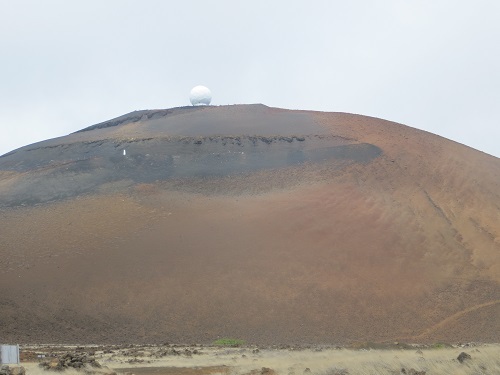
Another Ascension golf ball
Just in case you think Ascension is only for daytime capers, there is a nightlife - of sorts. On Fridays and Saturdays, beginning at 8 P.M., a minibus makes several rounds of the island's fun spots - the open-air bar scene of the Saints Club in Georgetown, the hopping and bopping Volcano Club at the U.S. base, the British NAAFI bar in land at Traveller's Hill, and the Two Boats Club at, yes you've guessed it, Two Boats. The last bus arrives back in Georgetown at 2.40 A.M.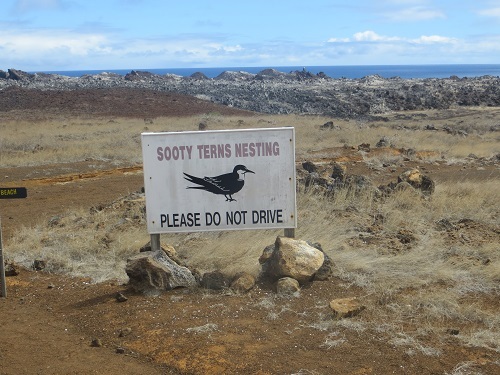
Nesting ground for the 'wideawake' bird
Based on personal experience the Volcano Club seems the most active with an ear-shattering, strobe-blinding, smoke-emitting disco, if Halloween night is anything to go by, when Frankenstein, his bride with huge black stitches painted across her whitened face, and four men in medical masks and white overalls spattered in red with Ebola Response Team emblazoned on their backs, were all prancing up and down. 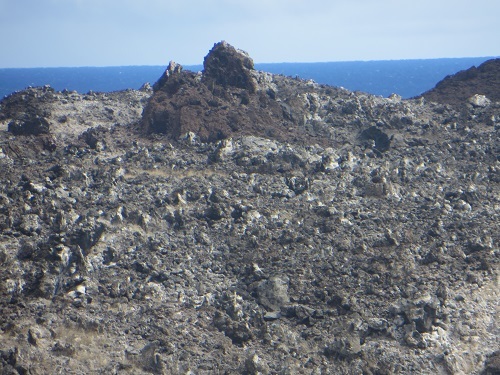
Nesting ground close-up
The best disguise, though, was the guy with a huge wolf's head, looking like somebody out of a Star War's pub. Who says you can't have fun on a remote rock in the middle of the South Atlantic!
And, oh yes, those camels. Near the lofty entangling cobwebs of wires and pylons of the BBC Atlantic Relay Earth Station at the northern end of the island, a red-bordered triangular road warning with a black camel on white graces a little bridge leading to English Bay.
There are indeed no camels on the island, but the road builders sent to South Africa for a sign to warn drivers of the humps in the road - and this is what they got back, so the story goes.
______________
By the same author: Bussing The Amazon: On The Road With The Accidental Journalist, available with free excerpts on Kindle and in print version on Amazon.
And Swimming With Fidel: The Toils Of An Accidental Journalist, available on Kindle, with free excerpts here, and in print version on Amazon in the U.S here.
